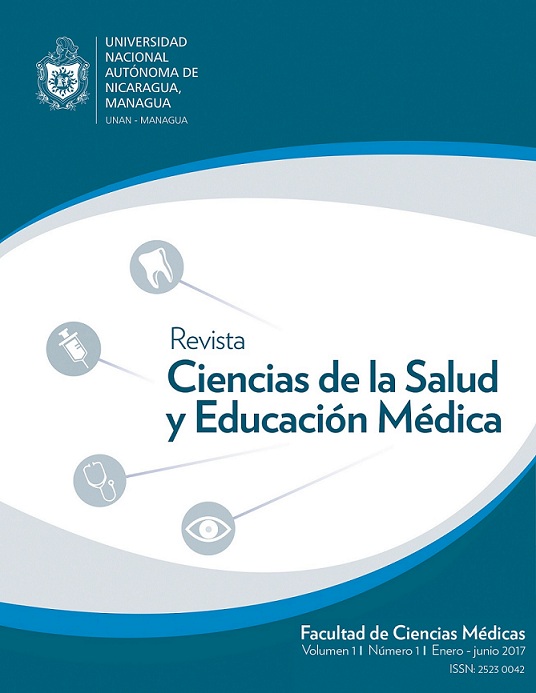Effectiveness of the treatment of Corticoresistant Nephrotic Syndrome in Pediatrics
Abstract
Idiopathic nephrotic syndrome is very common in children; its evolution is determined by the response to treatment with corticosteroids and the histological variety. However there is a 15-27% that are cortico-resistant (CRNS), in these cases alternative therapies can be applied to achieve remission of proteinuria. The Manuel de Jesus Rivera Children´s Hospital (HIMJR) in Nicaragua, applies, cyclophosphamide + enalapril + low-dose prednisone (scheme 1) or Cyclosporine A + enalapril + low dose prednisone (scheme 2). In order to analyze the effectiveness of these treatments and its relation with the histological variety, a study was carried out on seventy children diagnosed with CRNS at this medical center from 2005 to 2012.
An observational descriptive retrospective cross-sectional study was done and the following results were obtained: 57.1% of children were of the female sex, 51.4% focal and segmental glomeruroesclerosis (FSGS), injury of minimal changes 32.8%, membranous glomerulopathy 7.2%, membranoproliferative glomerulopathy 4.2% and inconclusive type 4.2%. The 70 patients in the study received scheme 1 treatment, obtaining complete remission (CR) in 38.5%, partial remission (PR) in 7.1% and 54.2% without remission (SR) of proteinuria. Nineteen children without remission received scheme 2, with the following results 26.3% with CR, 42.1% with PR and 31.5% without remission of proteinuria. In relation to the histological variety, 41.1% (14) of patients with FSGS treated with schema 1, and 36.3% (4) treated with scheme 2, obtained complete remission (CR). In Nicaragua, it is recommended to maintain scheme 1 to treat the CRNS. Alternatives treatments were established for in those cases without remission.
Key words: Corticorresistente, focal Segmental Glomerulosclerosis, immunosuppression, treatment nephrotic syndrome.

